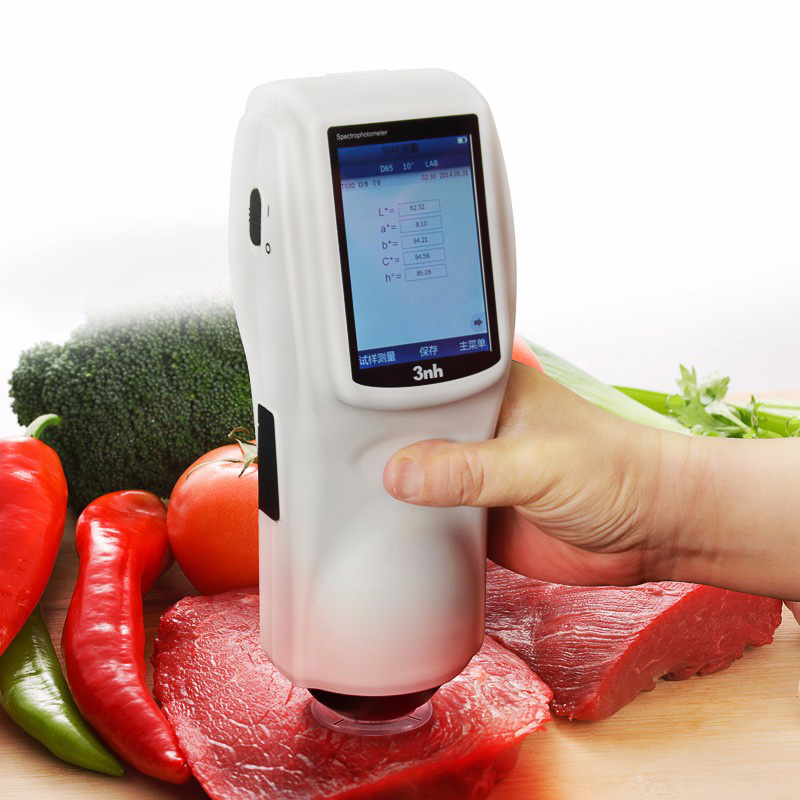Currently, there are many color measurement instruments on the Chinese market, but most are imported from abroad, with relatively few domestically produced instruments. However, recent growth in domestic color measurement has led to the development of colorimeter technology, which can measure the color of nearly every food. Food can be categorized into three categories based on their optical properties: opaque, translucent, and transparent. Different colorimeter types are therefore suitable for these different food types.
What equipment is used for food color testing?
Directional colorimeters are suitable for opaque foods such as fruit, corn, cheese, flour, tomato sauce, cheese, and meat; integrating sphere colorimeters are suitable for transparent foods such as clarified juice, beer, vegetable oil, and beverages. Colorimeters can be used to measure the surface quality of rigid objects or flexible, multi-faceted foods. For rigid physical foods such as fruit, potatoes, and beans, a colorimeter is used to measure the color of tomatoes, construct a regression equation for lycopene content, and evaluate lycopene content. For flexible, multi-faceted foods such as meat, flour, and pasta, colorimeters are used to directly measure meat color. Meat color is primarily determined by the myoglobin and hemoglobin content in the muscle. Obtaining objective quantitative indicators of meat color helps evaluate and grade raw meat and monitor its freshness.
Colorimeters are commonly used to measure the color of regular and irregular meats such as steak, pork, chicken, and tuna, and to monitor color changes during storage to ensure product quality. Colorimeters can also be used to measure the surface of pastries such as steamed buns, noodles, and bread, determining acceptable color deviations for samples and facilitating qualitative and quantitative quality control. Using a colorimeter to measure the color of liquid foods can assess food purity and determine spoilage. Although liquid foods have numerous quality indicators, these tests are primarily conducted using chemical methods, which are complex and require large amounts of organic solvents, increasing testing costs and posing a risk to testers. Therefore, color can be used as a basis for quality assessment. For example, when heating peanut oil, a colorimeter was used to establish relationships between color parameters and chemical indicators. Comparative analysis of the colors of different bayberry juices using color difference analysis and perceptual evaluation demonstrated high consistency and quality. Colorimeters can also be used to indirectly measure certain food components, such as amylose, which serves as a primary basis for grading high-quality rice. A spectrophotometer measures the absorbance of a colorimetric solution, and the amylose content is calculated from the color value of the sample solution, achieving high accuracy.
When a spectrophotometer is used to analyze the color of a sample, the sample is typically prepared as a liquid with a uniform texture. For example, in meat quality testing, the surrounding fascia and fat are removed, minced, and a tissue extract is prepared. Spectrophotometry is then used to measure the absorbance of various channels to determine the total pigment content of the muscle under different conditions, providing a reliable theoretical basis for breed improvement and meat quality identification.
Best Practices for Meat Color Measurement
In order to achieve appropriate and consistent results, undertake the following measures to ensure precision and trust in reliability while performing meat color measurement:
Standardized Lighting: During visual or instrumental assessment tests, use lighting set to D65 daylight.
- Sample Uniformity: Ensure that the meat samples are uniform in thickness, moisture content, and texture prior to measurement.
- Regular Calibration: Prior to every session, instruments have to be proven to be set against certified white and black tiles as per the required standards.
- Multiple Measurements: Taking measurements across different areas of a sample, and averaging those values helps remove the impacts of extreme values.
- Record Keeping: Maintain quality tracking and comparison logs over time of the Lab* values.
- Employee Education: Make sure that staff know how to use and interpret the results of the measurement instruments. This differentiating bad meat color in acceptable and unacceptable ranges ensures correct meat classification.
Conclusion
Color is an important measurement of characterization because it can indicate freshness. The different types of meat such as beef, chicken, trout, rainbow trout, salmon and also hamburger meat require color assessment to ensure modern standards of food production and retail.

